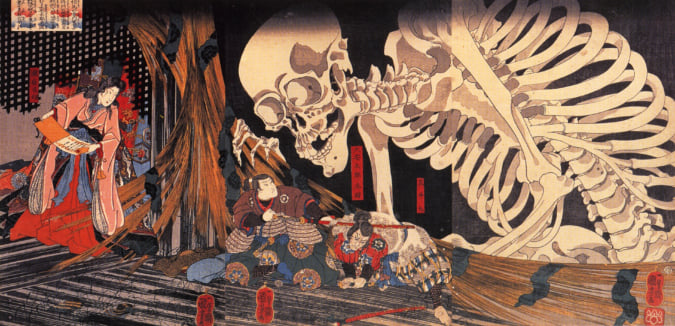‘Tampopo’, the Pioneering ‘Ramen Western’
A food-erotica comedy, this 1985 cult film is the first (and only) self-proclaimed representative of a genre inspired by Italian westerns.
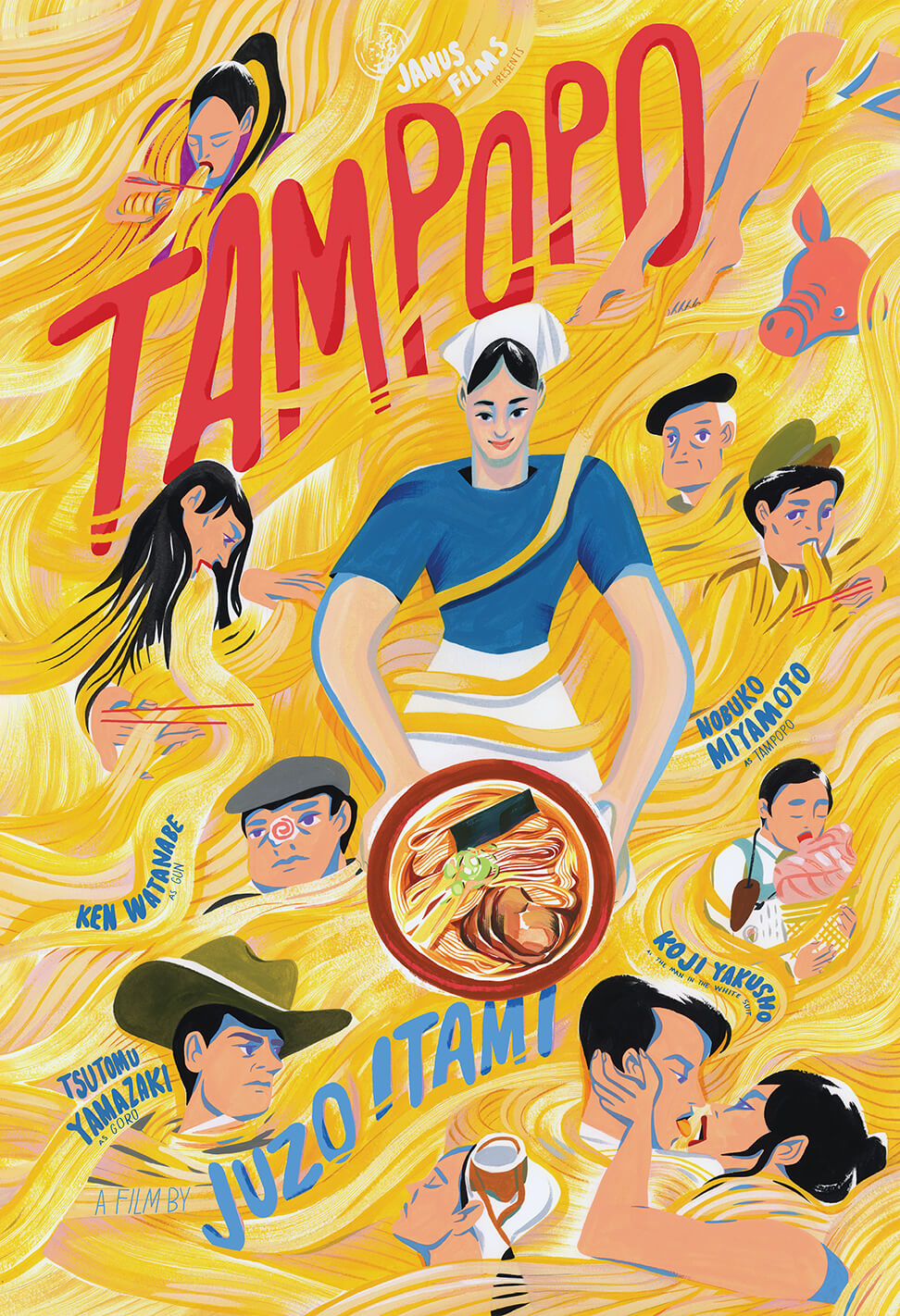
Poster for ‘Tampopo’ Theatrical Release - Janus Films
Released in 1985, this second feature film from Juzo Itami is a ‘ramen western’, alluding to the famous ‘spaghetti westerns’, films made in Italy, of which one of the most iconic representatives is Sergio Leone.
This film is considered as a food-erotica comedy of sorts. It contains western elements, violence, spying and zany stories, the latter often being linked to food (for example the woman who goes around fondling fruit and cheese in a supermarket, and the couple whose bedroom antics feature eggs).
In search of the perfect noodles
The heroine, Tampopo, is a young widow who runs a noodle soup (ramen) restaurant in a working-class neighbourhood in Tokyo, where she meets Goro, a trucker who looks like a cowboy. Goro finds that Tampopo’s ramen is ‘missing something’. The pair decide to set out on a culinary quest, the aim of which is to find the perfect noodle recipe.
Humorous and satirical, the film nevertheless maintains a deeply respectful attitude towards food. Tampopo was restored and re-released in cinemas in 2016. It’s a film that’s ideal to (re)watch while enjoying a bowl of Japanese noodle soup.
Tampopo (1985), a movie directed by Juzo Itami and released on DVD and blu-ray by The Criterion Collection.
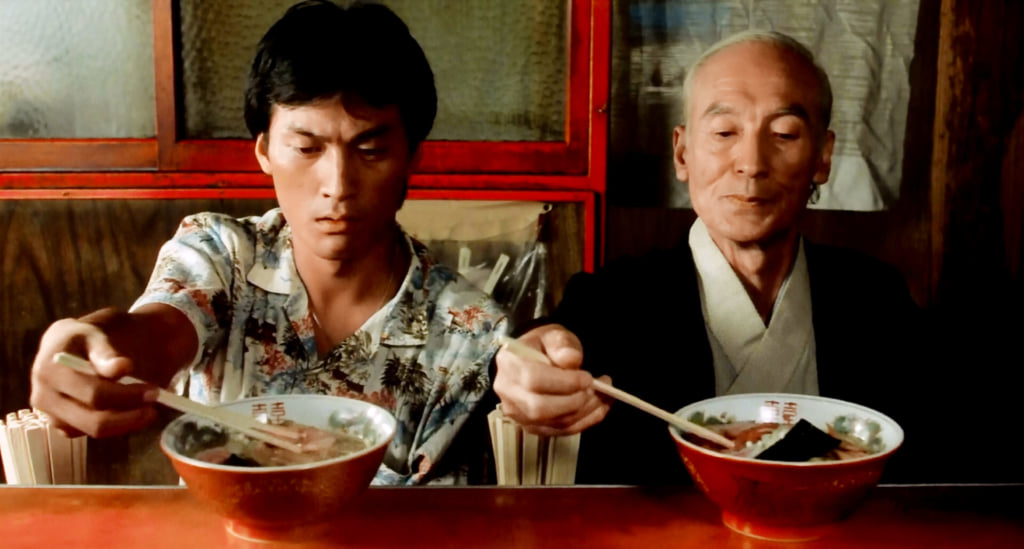
© ‘Tampopo’ - Films Sans Frontières
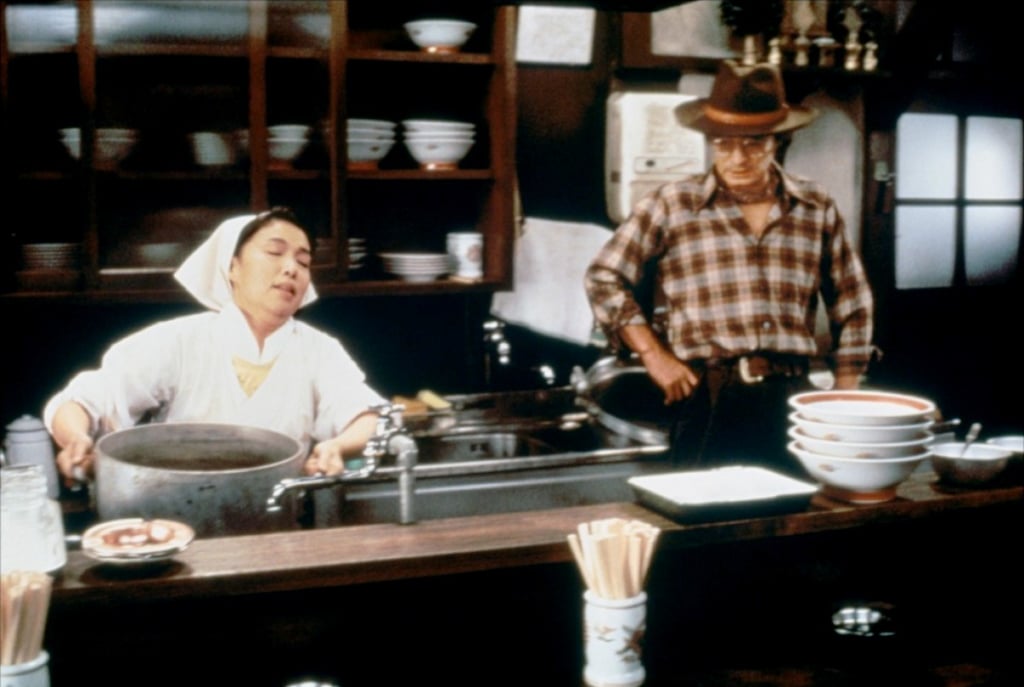
© ‘Tampopo’ - Films Sans Frontières
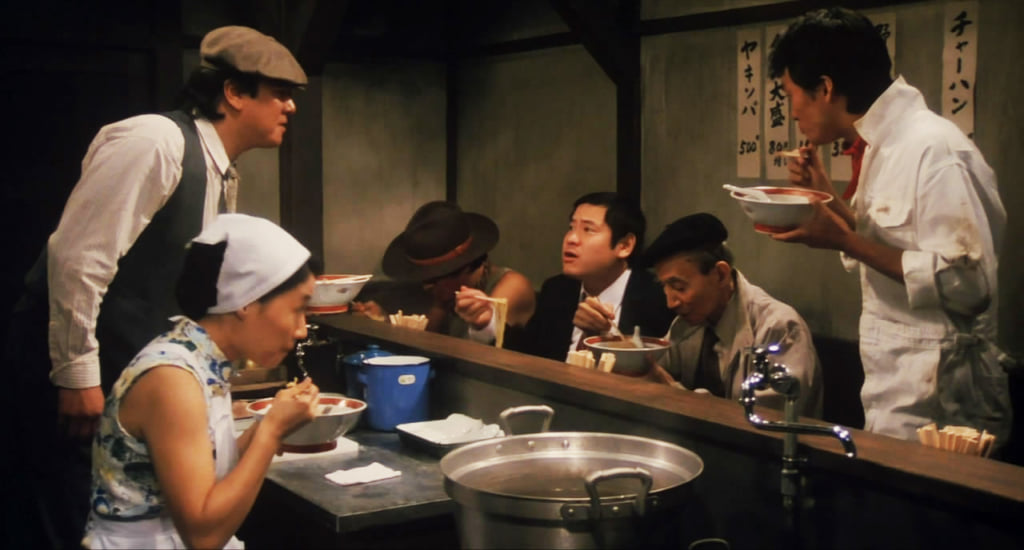
© ‘Tampopo’ - Films Sans Frontières

© ‘Tampopo’ - Films Sans Frontières
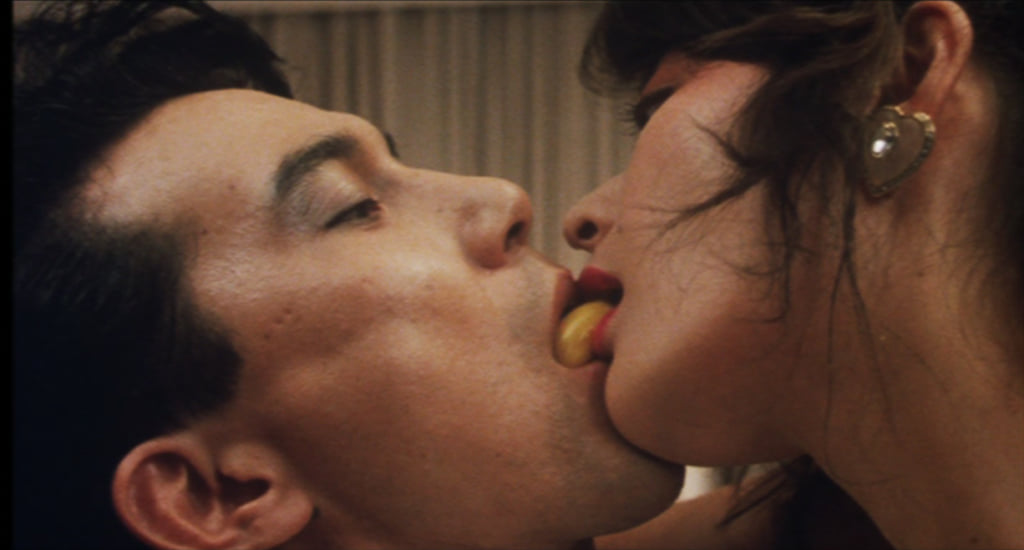
© ‘Tampopo’ - Films Sans Frontières
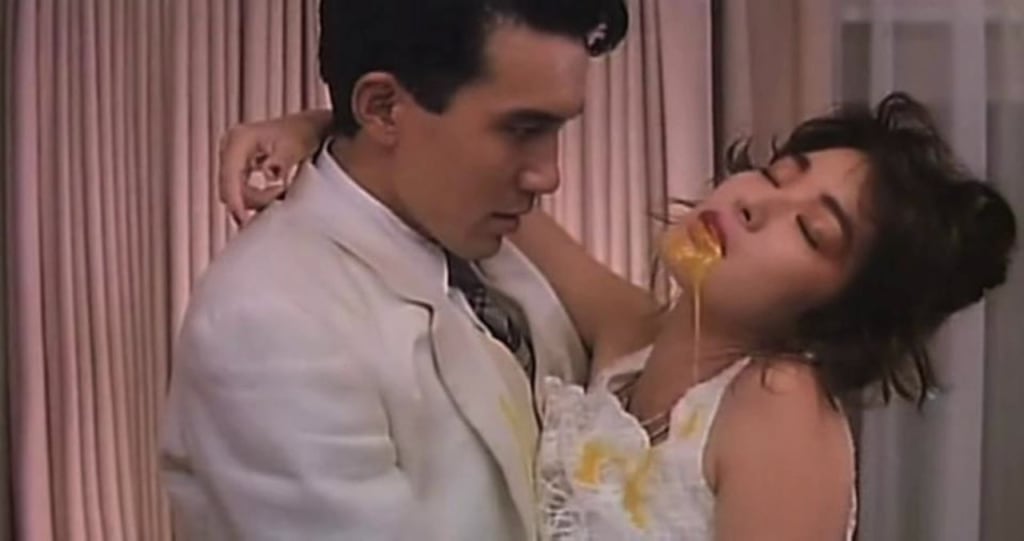
© ‘Tampopo’ - Films Sans Frontières
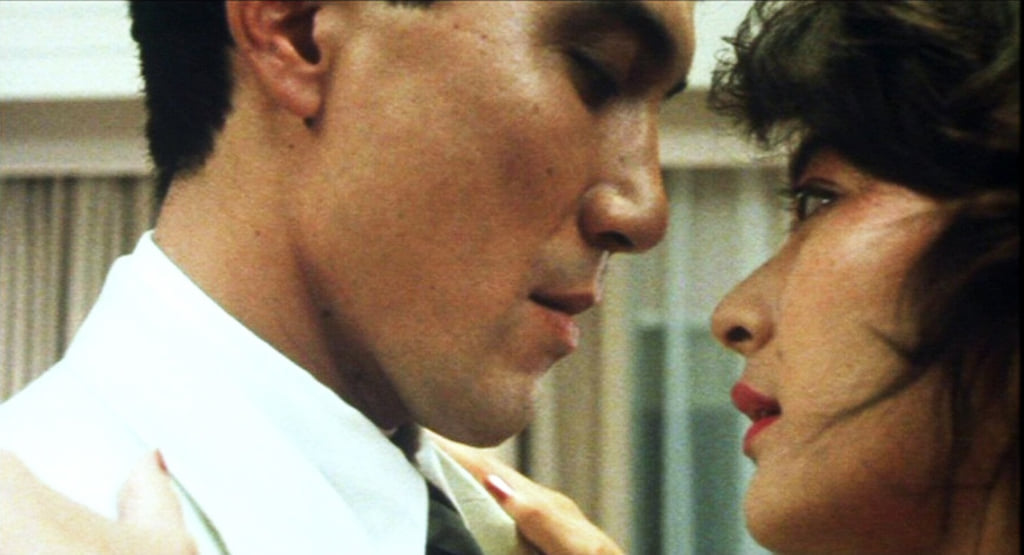
© ‘Tampopo’ - Films Sans Frontières
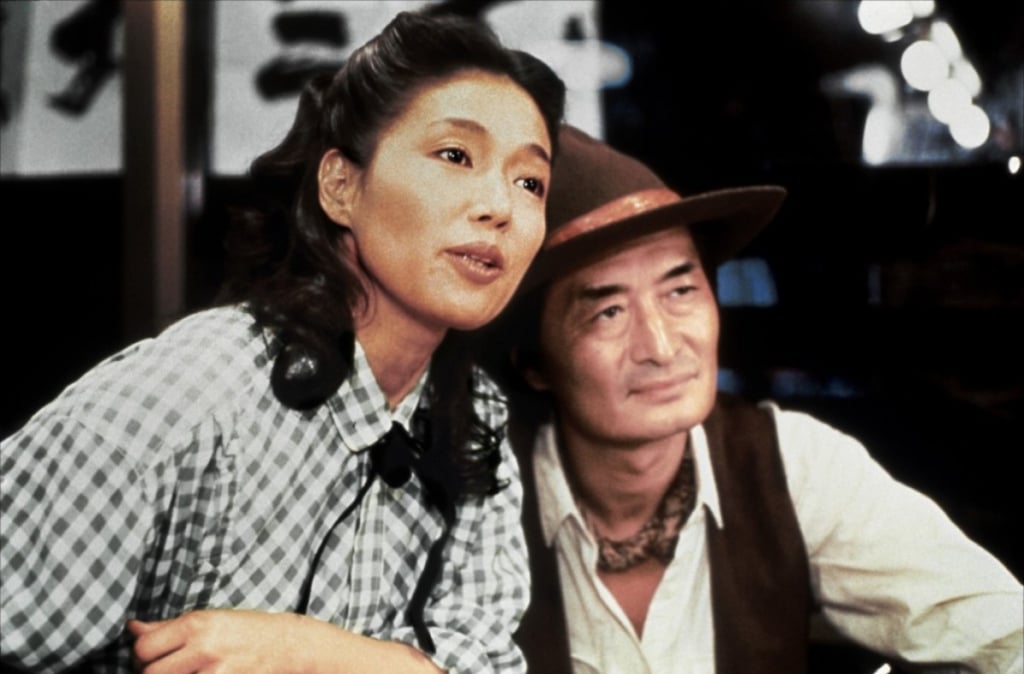
© ‘Tampopo’ - Films Sans Frontières

© ‘Tampopo’ - Films Sans Frontières
TRENDING
-
The Tattoos that Marked the Criminals of the Edo Period
Traditional tattoos were strong signifiers; murderers had head tattoos, while theft might result in an arm tattoo.

-
Gashadokuro, the Legend of the Starving Skeleton
This mythical creature, with a thirst for blood and revenge, has been a fearsome presence in Japanese popular culture for centuries.

-
‘Chindogu’, the Genius of Unusable Objects
Ingenious but impractical inventions: this was all that was required for the concept to achieve a resounding success.

-
Tokihiro Sato, Shedding Light on an Invisible Presence
Photographers are generally behind the camera, but 'Photo Respiration' represents the artist's ephemeral appearance.

-
Recipe for Ichiraku Ramen from ‘Naruto’ by Danielle Baghernejad
Taken from the popular manga with the character of the same name who loves ramen, this dish is named after the hero's favourite restaurant.


